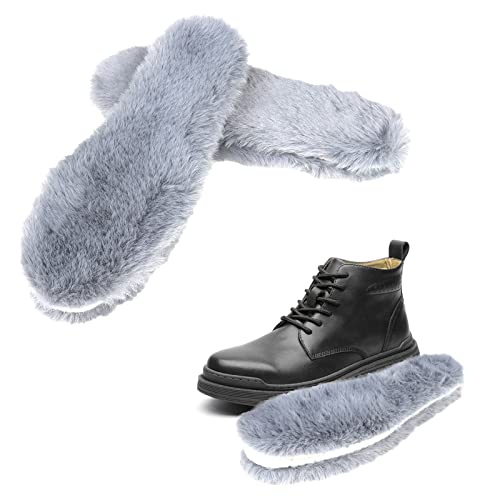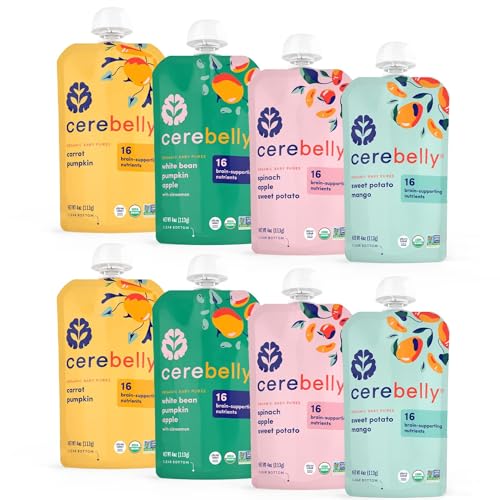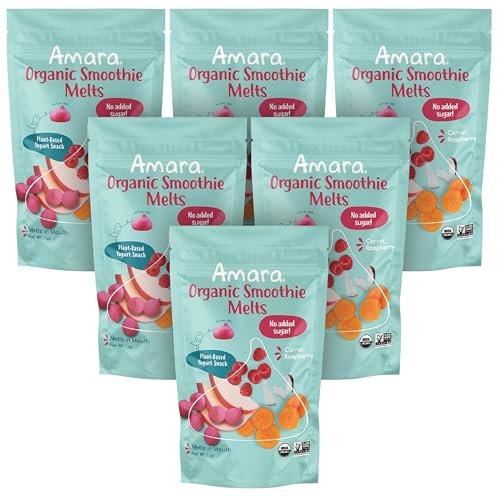Buying a years supply of rabbit pellets ?
- Thread starter Olbunny
- Start date

Help Support Rabbit Talk Forum:
This site may earn a commission from merchant affiliate
links, including eBay, Amazon, and others.
JG3
Well-known member
Every mill I’ve talked to says pellets only last 6 months. After that, they’ll be stale, decreasing in nutritive value and risking mold and bugs.
I would learn how to feed rabbits without pellets (or at least dramatically less). Supply issues don’t just increase price, you’re also risking not having access to pellets at all.
I would learn how to feed rabbits without pellets (or at least dramatically less). Supply issues don’t just increase price, you’re also risking not having access to pellets at all.
bighairbuns
Well-known member
- Joined
- Oct 27, 2020
- Messages
- 47
- Reaction score
- 61
Pellets lose nutritional value over time, the rule of thumb I have always heard is not to feed more than 6 months out from the milling date. I've even seen some references to pellets losing nutritional value after only 3 months as well. You would have to store pellets in a freezer to keep a year's supply. That's a lot of freezer space.
I prep for the rabbits by buying grains for fodder in bulk, as barley/wheat/oat are viable for years. I also keep an ample supply of livestock mineral blocks on hand. Fodder, a trace mineral block, and yard weeds are my plan if pellets become unavailable.
The fodder and mineral blocks are about a 10th of the cost of pellets for me, and I've been using them to reduce feed costs for years. If things became dire, I could easily up the fodder production and have no need for pellets in about 7 days time.
I prep for the rabbits by buying grains for fodder in bulk, as barley/wheat/oat are viable for years. I also keep an ample supply of livestock mineral blocks on hand. Fodder, a trace mineral block, and yard weeds are my plan if pellets become unavailable.
The fodder and mineral blocks are about a 10th of the cost of pellets for me, and I've been using them to reduce feed costs for years. If things became dire, I could easily up the fodder production and have no need for pellets in about 7 days time.
Several months ago, our local feed store was selling pellets at one third the price since they were able to get a shipment of the high protein pellets from another feed store in Hilo who doesn't usually bring in the high protein ones. It was a mistake from the shipper so the Hilo feed store didn't have to pay for them. Since the pellets are shipped in from about 2,500 miles away, the shipper didn't want to ship them back and our local feed store was able to get them very inexpensively. I bought about twenty bags and we only use about two and a half per month.
I'm sure by the time the pellets get to the islands, they're already a month old or more. I've had them stored now for going on four months. The newly opened bags of stored pellets don't seem quite as green as usual and they smell a little less 'mowed lawn' than usual. The buns still pile into them but I suspect they aren't as fresh as usual. I think the pellets will remain palatable until we run out of them, but not sure if they'd last a year and still be tasty to the buns. Not sure about nutritional values, although they'd most likely keep the buns alive. Brings up the concepts of 'minimum and optimum', though.
Since we are on the end of a fairly long supply chain, there's frequent gaps in availability of the usual feed. When their usual high protein feed isn't available, then they sometimes end up with the sheep's alfalfa pellets. Or no pellets at all and just forage. Which we can do year round here since it never freezes, but not all folks would have that option.
I like to give them some grain, usually rolled barley in addition to their pellets and grasses (we can't afford hay, it's about $40 for a small bale and will mildew in about ten days). Sometimes the feed stores are out of barley, then we default to dry COB. Sometimes they don't have either barley or COB, then we get 'all stock'. Sometimes they don't have that either, then the buns just get forage. It's a really good thing we can feed them nothing but forage if we have to since sometimes we have to and that's not even from any particular supply chain issue, just from being on an island in the middle of a really big pond.
I'm sure by the time the pellets get to the islands, they're already a month old or more. I've had them stored now for going on four months. The newly opened bags of stored pellets don't seem quite as green as usual and they smell a little less 'mowed lawn' than usual. The buns still pile into them but I suspect they aren't as fresh as usual. I think the pellets will remain palatable until we run out of them, but not sure if they'd last a year and still be tasty to the buns. Not sure about nutritional values, although they'd most likely keep the buns alive. Brings up the concepts of 'minimum and optimum', though.
Since we are on the end of a fairly long supply chain, there's frequent gaps in availability of the usual feed. When their usual high protein feed isn't available, then they sometimes end up with the sheep's alfalfa pellets. Or no pellets at all and just forage. Which we can do year round here since it never freezes, but not all folks would have that option.
I like to give them some grain, usually rolled barley in addition to their pellets and grasses (we can't afford hay, it's about $40 for a small bale and will mildew in about ten days). Sometimes the feed stores are out of barley, then we default to dry COB. Sometimes they don't have either barley or COB, then we get 'all stock'. Sometimes they don't have that either, then the buns just get forage. It's a really good thing we can feed them nothing but forage if we have to since sometimes we have to and that's not even from any particular supply chain issue, just from being on an island in the middle of a really big pond.
KelleyBee
Well-known member
Do you purchase what would be considered human grade wheat, barley and oat berries? Also, is there a particular method you follow for sprouting and growing the fodder? Are there any web recommendations you can share for ordering the berries and for a how-to fodder production?I prep for the rabbits by buying grains for fodder in bulk, as barley/wheat/oat are viable for years. I also keep an ample supply of livestock mineral blocks on hand. Fodder, a trace mineral block, and yard weeds are my plan if pellets become unavailable.
I've read about pellets loosing nutritional value after processing. Maybe but to what extent ? And how ? If it's dried correctly. The grain is all harvested at the same time. Put into the same grain bin. So does cracking n compressing make it loose nutritional value. And how much. All I can find on the net is 6 months repeated but no rational.
Anyway it's winter here for 6 months and I keep it in a dark shed.
And i believe that the feed mill produces the rabbit pellets all a the same time. A years worth.
I've not found any difference. And if they lost some nutritional value at least I have some. Shortages are my concerns. As is price. 18 to 30 $ a bag in a year. I forage all the time I can afford every morning. Time is money but I get them all fresh fodder daily. And it has to be done daily if you don't have pellets. I also have timothy hay. It probably looses nutritional value but it's what I can get.
My point being that price, availability are going the wrong way fast now. What's it going to be like next spring ?
I will probably buy a years worth next fall after this year's grain crop is harvested.
Interesting discussion on growing barley or rye sprouts. I've seen trays that fill water from the top to cascade down. And with led grow light, we have sunshine most of the day, the price of a grow light is greatly reduced.
If you all come up with something keep us posted. Friers eat lots of food
Anyway it's winter here for 6 months and I keep it in a dark shed.
And i believe that the feed mill produces the rabbit pellets all a the same time. A years worth.
I've not found any difference. And if they lost some nutritional value at least I have some. Shortages are my concerns. As is price. 18 to 30 $ a bag in a year. I forage all the time I can afford every morning. Time is money but I get them all fresh fodder daily. And it has to be done daily if you don't have pellets. I also have timothy hay. It probably looses nutritional value but it's what I can get.
My point being that price, availability are going the wrong way fast now. What's it going to be like next spring ?
I will probably buy a years worth next fall after this year's grain crop is harvested.
Interesting discussion on growing barley or rye sprouts. I've seen trays that fill water from the top to cascade down. And with led grow light, we have sunshine most of the day, the price of a grow light is greatly reduced.
If you all come up with something keep us posted. Friers eat lots of food

$14.20
$24.00
Top Secret Restaurant Recipes: Creating Kitchen Clones from America's Favorite Restaurant Chains: A Cookbook
travis_textbooks

$9.99
The Lodge Cast Iron Cookbook: A Treasury of Timeless, Delicious Recipes
Amazon.com Services LLC

$7.65 ($0.10 / Ounce)
$10.99 ($0.14 / Ounce)
Himalayan Nature 100% Natural Himalayan Rock Deer Salt Block - Animal Licking Mineral Salt Block, Natural Feed Salt Block, 5 Lbs, 2x4x8 inch, Pack of 1
Amazon.com

$2.99 ($3.19 / lb)
Kaytee Alfalfa Cubes for Rabbits, Guinea Pigs, and Other Small Animals, 15 oz
Amazon.com

$19.58
$27.99
The Fast Metabolism Diet Cookbook: Eat Even More Food and Lose Even More Weight
Amazon.com

$58.00 ($0.14 / Ounce)
Wakefield Extra Large Virginia Peanuts for Animals, 25 LBS
Monroe Systems for Business

$23.74
$45.99
FITORY Womens Open Toe Slipper with Cozy Lining,Faux Rabbit Fur Cork Slide Sandals Black Size 10
FITORY-SHOES

$11.99 ($6.00 / Count)
$13.99 ($7.00 / Count)
JarThenaAMCS 2Pcs Rabbit Hay Feeder Bag with 2 Holes Mushroom Guinea Pig Hanging Hay Feeding Bag Storage Dispenser for Chinchilla Hamster Bunny Small Animal Pet
JINGTU HOME

$38.50 ($0.53 / Ounce)
Peter Rabbit Organics Fruit Flavors Variety Pack 4 oz. Squeezable Pouches (Pack of 18)
Amazon.com

$12.64 ($0.10 / Ounce)
$14.84 ($0.12 / Ounce)
Himalayan Nature 100% Authentic Himalayan Pink Salt Chunks, 10 LBS, Animal Feed Salt Block, Plastic Bag of Salt Chunks for Deer, Horse & Animals, Pack of 1
Amazon.com

$14.63
$29.99
Fit Men Cook: 100+ Meal Prep Recipes for Men and Women―Always #HealthyAF, Never Boring
Amazon.com

$19.79
$35.95
Complete Guide To Fasting: Heal Your Body Through Intermittent, Alternate-Day, and Extended Fasting
Amazon.com

$6.79
$7.99
REDESS Women Winter Pompom Beanie Hat Fleece Lined Warm Hats, Thick Slouchy Snow Knit Crossed Cap for Ladies…
YUAN SHEN M
Azure Standard sells animal barley and oat berries. organic I believe. I don't know about barley but whole oats and wheat will last 30 years if stored properly. Sprouting for fodder is easy. Put about a half inch of seeds into a container with holes drilled in the bottom. No soil is necessary. Water two or three times a day depending on your weather. Start a new batch every day. Starting on day 7 or 8 you'll have a fresh container of sprouts every day. You can stack them if you have the space and put a catchment at the bottom so no water is wasted. The sprouted seeds will come out in a whole mat that you can slice up and feed, roots and all. Start them out slowly if they are not used to fresh greens. If they get loose stools, back off and feed dry hay and water and then reintroduce more slowly. Stock up on mineral blocks if you won't be feeding any pellets.Do you purchase what would be considered human grade wheat, barley and oat berries? Also, is there a particular method you follow for sprouting and growing the fodder? Are there any web recommendations you can share for ordering the berries and for a how-to fodder production?
Edit: I forgot to say that you need to soak the seeds for 24 hours before starting the sprouting process. Soak, drain, then put them in the container with holes. The holes should only be large enough for the water to drain out slowly, over a period of several minutes, not just wash through quickly.
Last edited:
bighairbuns
Well-known member
- Joined
- Oct 27, 2020
- Messages
- 47
- Reaction score
- 61
I've read about pellets loosing nutritional value after processing. Maybe but to what extent ? And how ?
The problem with the pellets losing nutritional value is with the vitamin and mineral premixes that are added to the pellets. Vitamins are organic compounds and start decaying/losing their potency the moment they are synthesized or extracted. Just oxidation from exposure to air and humidity.
They've done studies on the premixes and whole feeds for animals. One from Kansas state found 50% loss in vitamin potency with 6 month of feed storage.
If you are feeding fresh foods in addition to pellets, it's probably not a problem. The pellets would be easy calories and the rabbits would make up the loss with vitamins from the fodder/forage/veggie scraps/hay and whatnot, but the additional foods would have to be fed consistently and may need to be increased as the pellet supply ages.
The rabbits would probably survive on deficient pellets alone, but fewer, and smaller litters would be likely and lower immune systems in the herd may lead to higher than normal losses.
- Joined
- Oct 18, 2021
- Messages
- 318
- Reaction score
- 347
I'm working towards a nutritional plan that includes whole grains and forage. Not there yet so trying to have at least 3 months of pellets on hand. Yes, the whole grains will retain nutrition better and a heck of a lot longer if kept dry and pest free. Planting more forage trees this spring.
So I was thinking, loss of nutritional value, really? But reading the rest of the posts then got me thinking in terms of prepping. The big problem is with oxidation. So seal the pellets in a 5 gal bucket with a lid seal. Package them with a dessicant or 12 and some oxygen absorbers. Even better, flood the bucket with nitrogen before sealing. That last might be too much effort. A cheap DYI oxygen absorber can be made using a spice sachet bag filled with iron filings.
For me pellets are a supplement for spring through autumn. Through winter they are a mainstay. So a "year" supply is really only 4 months worth. This year I will be harvesting the sunchokes earlier and I am hoping to have a good crop of bishops weed.
I couldn't find a "vitamin" lick. Is that a mineral salt lick?
For me pellets are a supplement for spring through autumn. Through winter they are a mainstay. So a "year" supply is really only 4 months worth. This year I will be harvesting the sunchokes earlier and I am hoping to have a good crop of bishops weed.
I couldn't find a "vitamin" lick. Is that a mineral salt lick?
There is a thread here where a member set up a fodder growing system in their basement.Do you purchase what would be considered human grade wheat, barley and oat berries? Also, is there a particular method you follow for sprouting and growing the fodder? Are there any web recommendations you can share for ordering the berries and for a how-to fodder production?
kthomestead
Member
- Joined
- Apr 21, 2022
- Messages
- 9
- Reaction score
- 10
Personally I wouldn't do that and risk feed going bad.





































